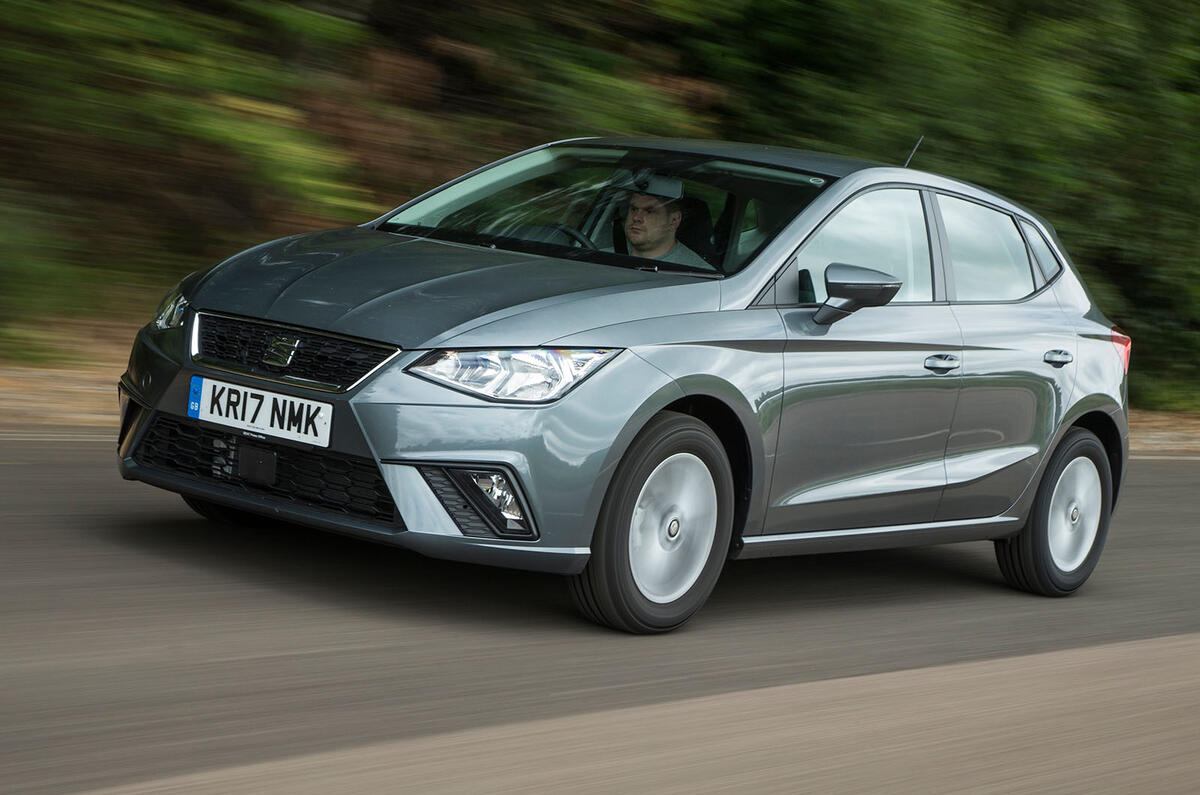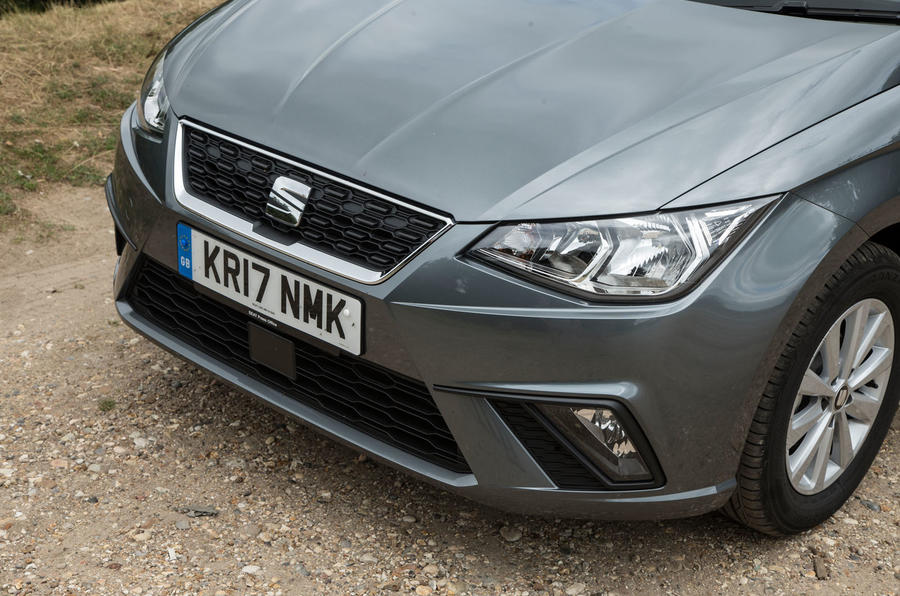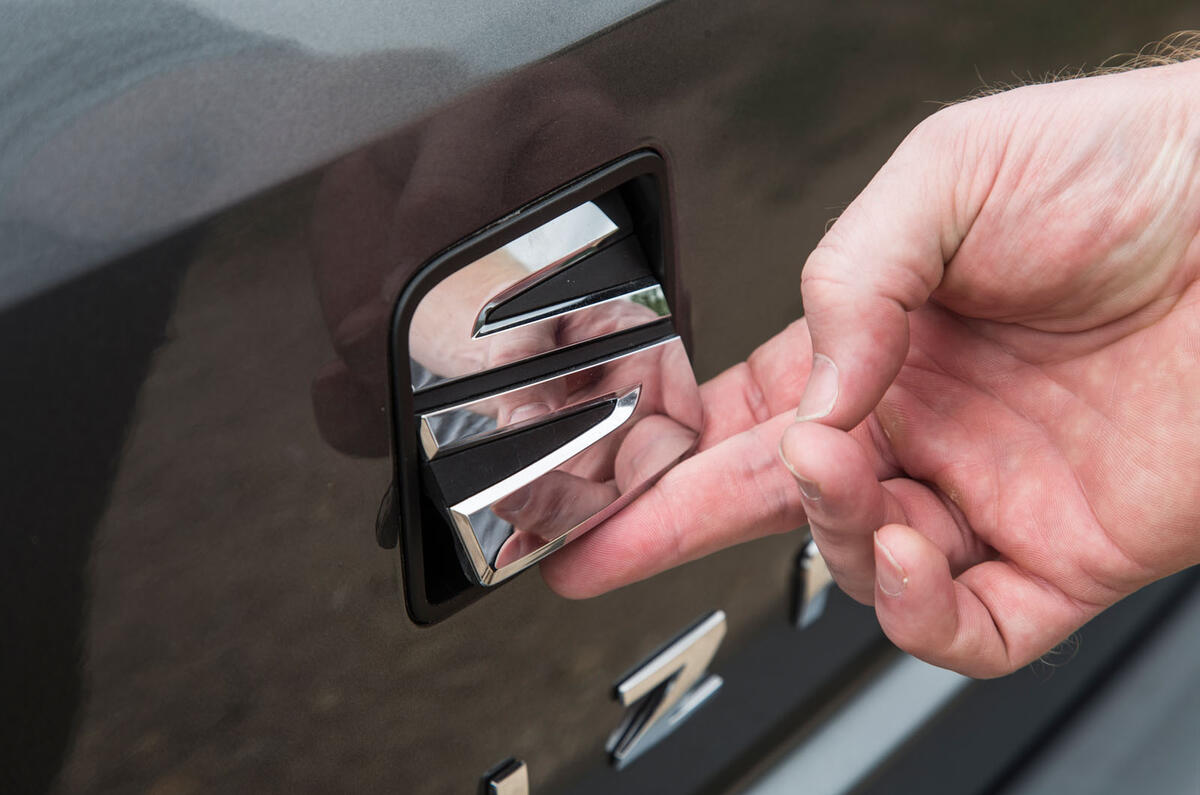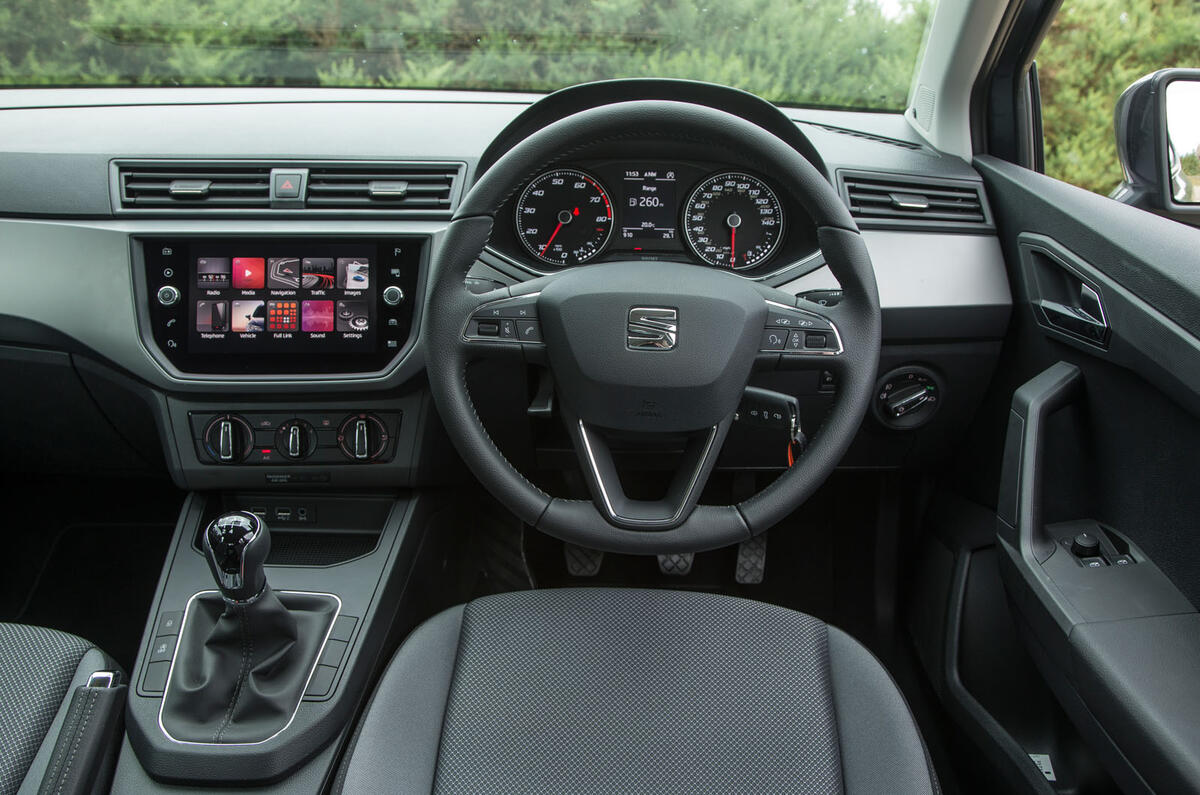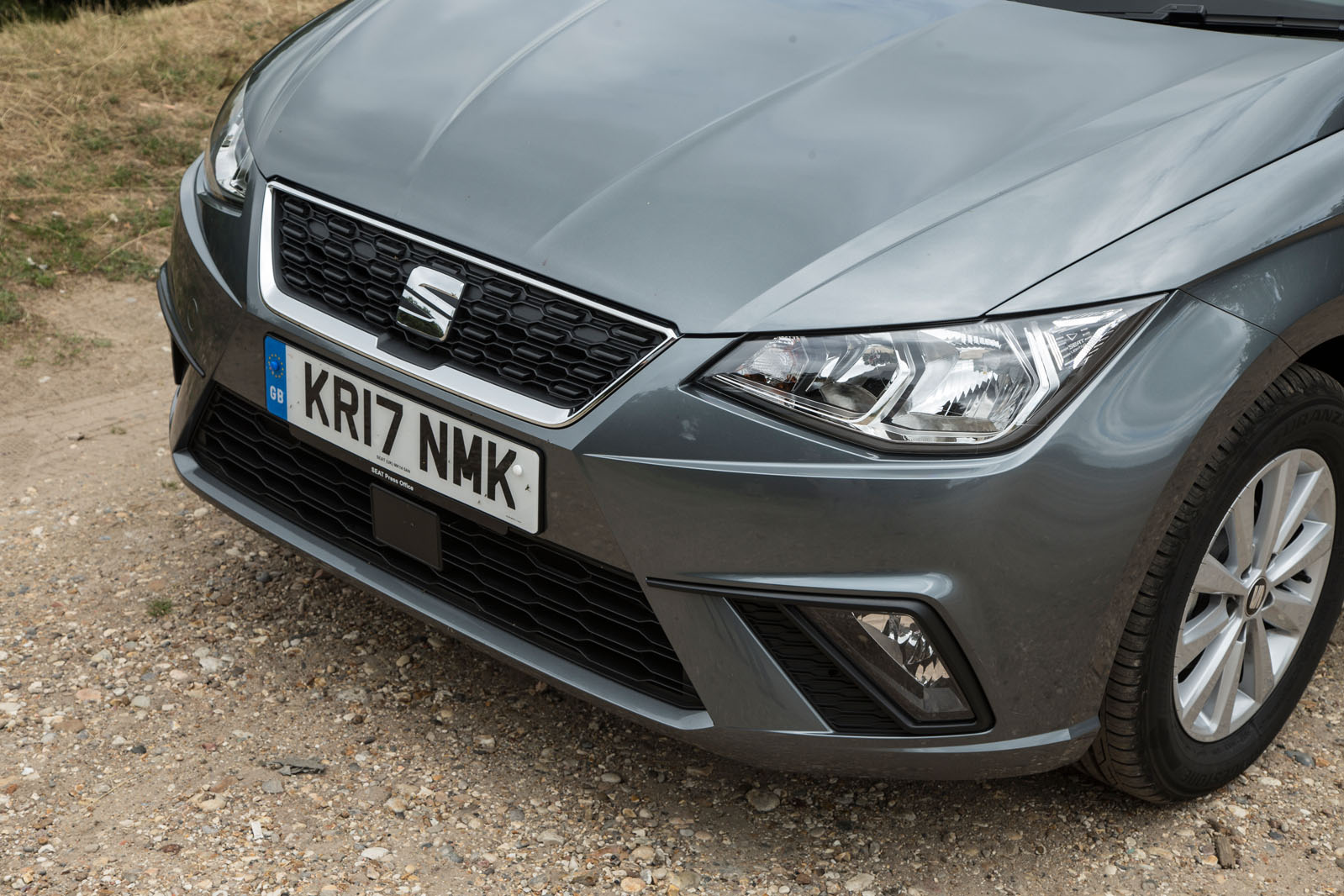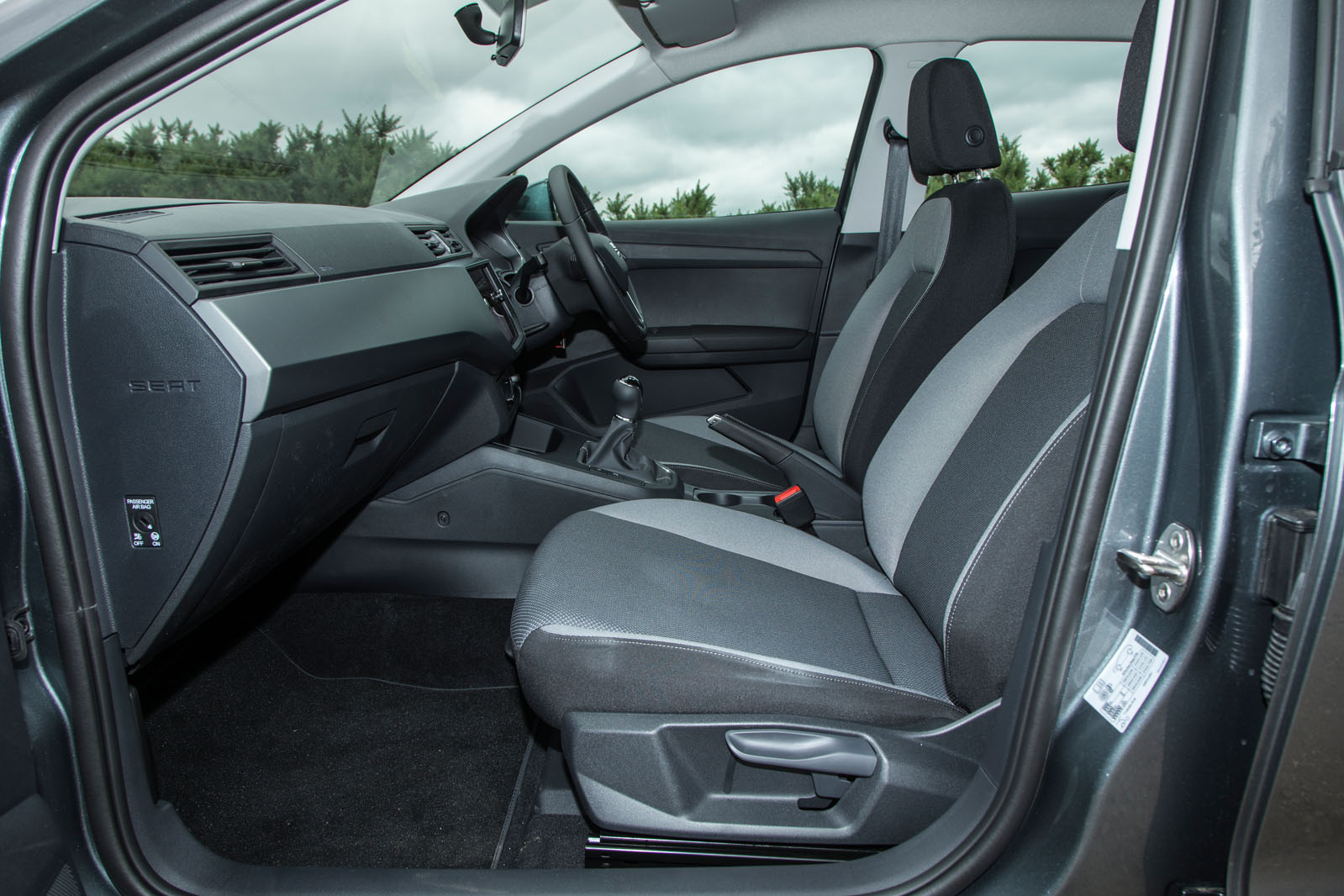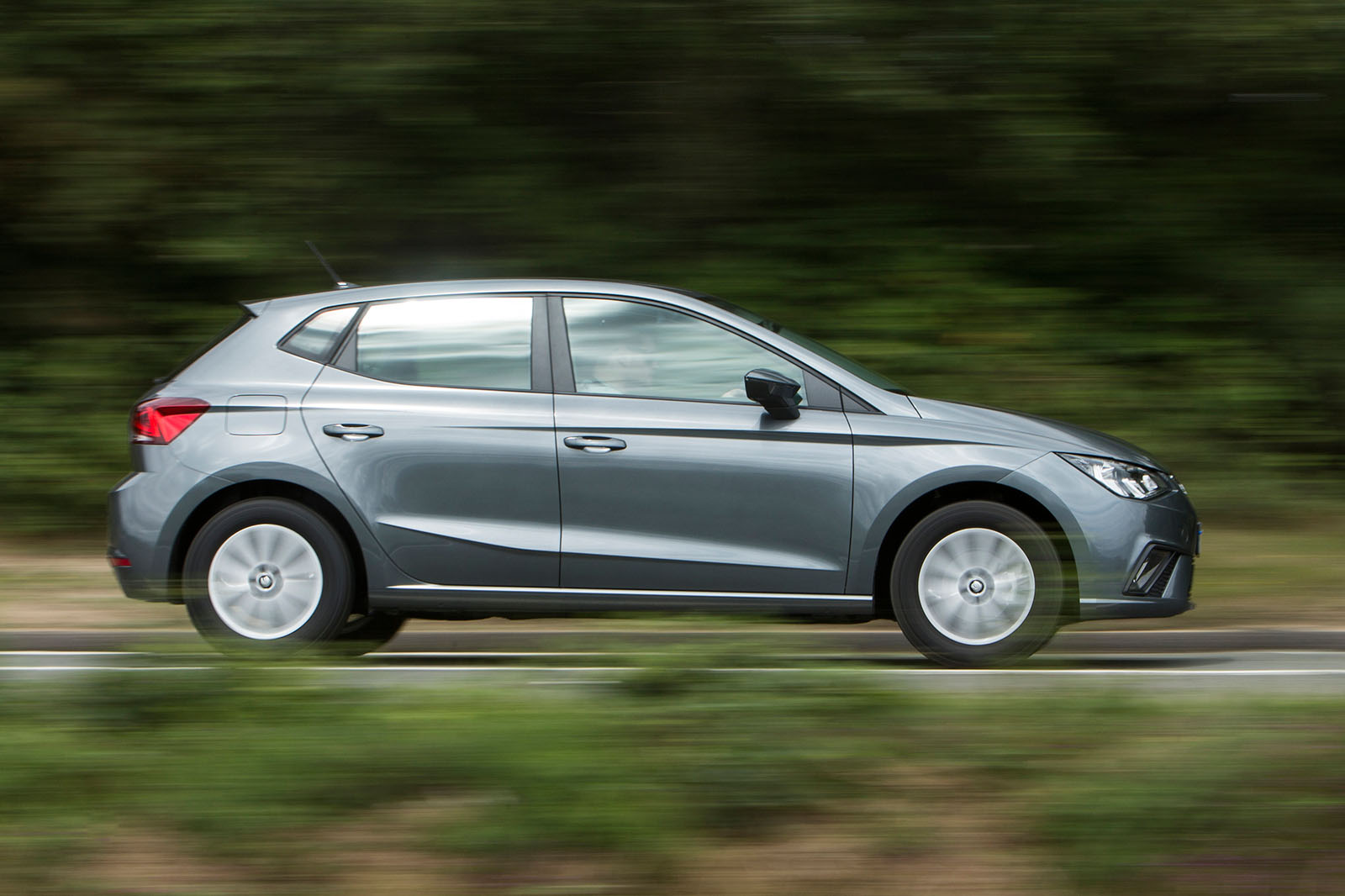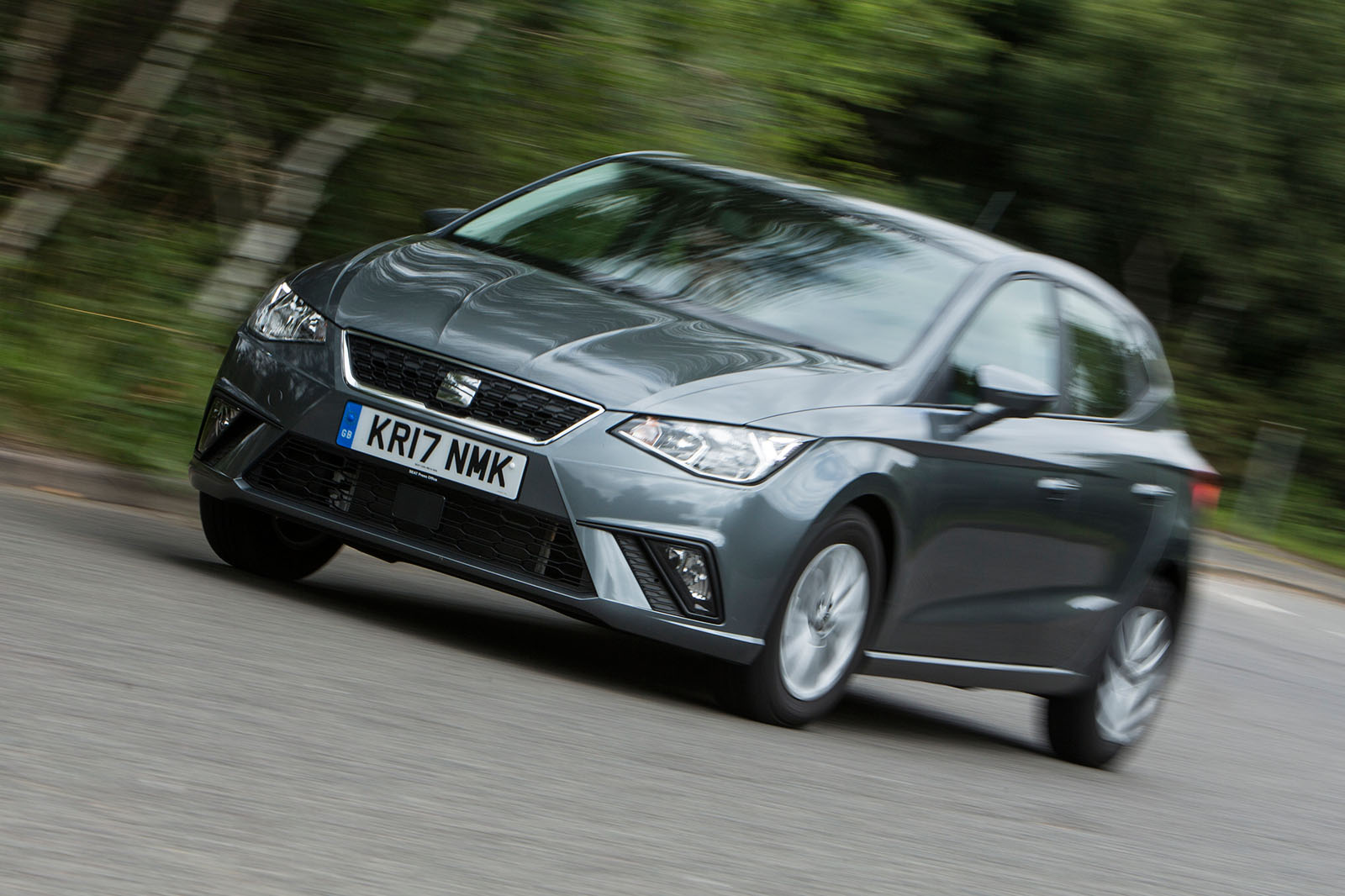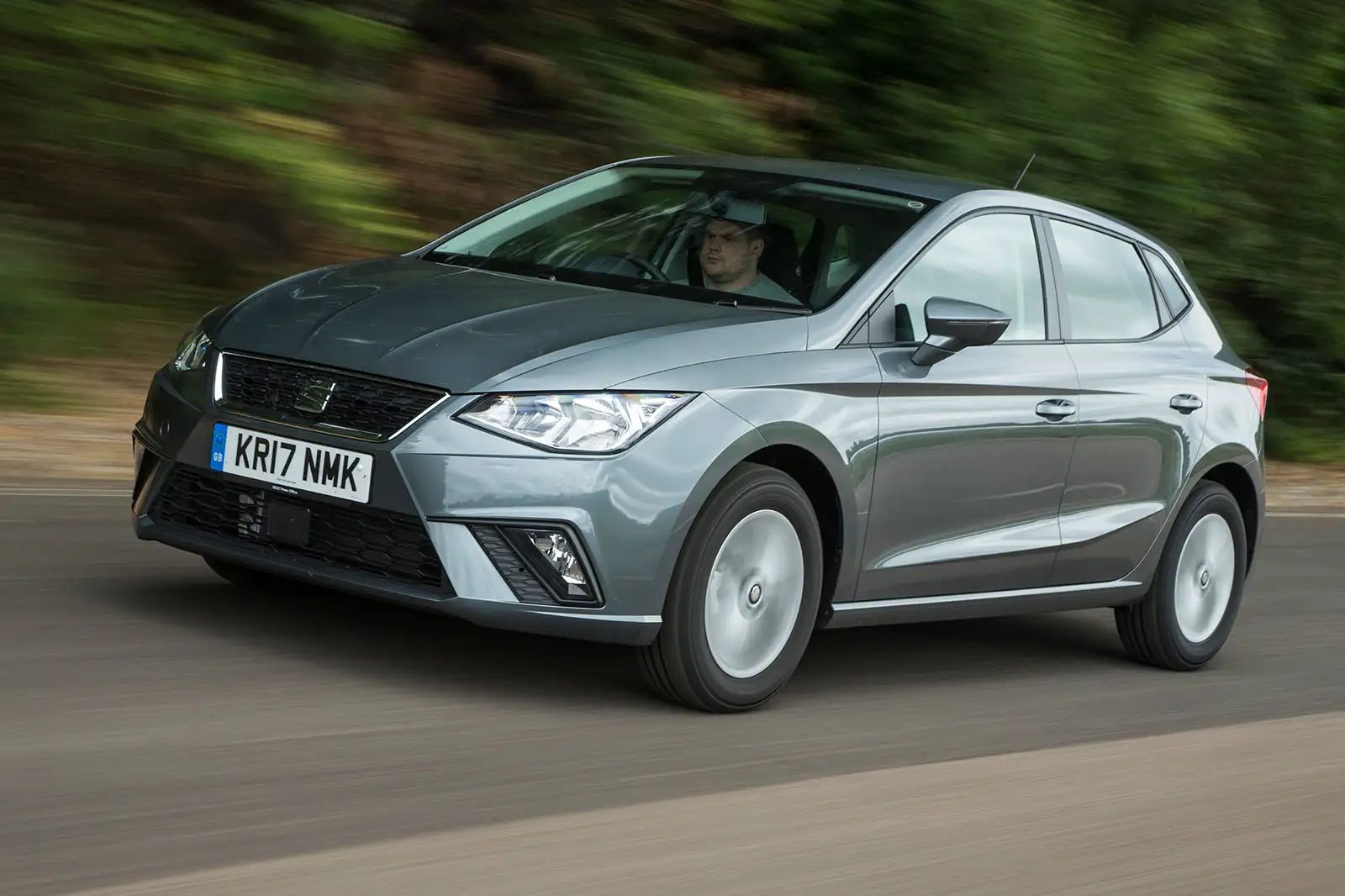Mild styling differences aside, the Ibiza’s new cabin is an instantly recognisable carrier of the current VW Group gene.
Its new proportions – as they were obviously intended to do – firmly locate the car in the middle ground between the Mii and the Seat Leon, with the layout and ergonomics simply scaled to match.
As both are eminently well-judged, they are to the car’s considerable benefit. Nothing that you come into contact with on a daily basis is poorly positioned or badly made, just as nothing you need to make immediate sense of is crude or illegible.
The incidentals are astutely handled, too: there is a large cubby for your phone, with easily accessible charging ports; there are reasonably spacious door bins; and there are two accessible if inevitably closely packed cupholders.
Almost as important, the aesthetic specific to Seat is also generally pleasing. Where the previous Ibiza felt a wee bit unbaked, both in look and feel, its replacement has ripened into a much more mature appearance.
Inevitably, this doesn’t preclude the use of cheap plastic – a commodity that the previous model had in abundance – but its deployment is cunningly concealed with either the appearance of soft-touch cladding or the clever use of matt (but not dull) finishes.
It helps, of course, that in SE Technology trim there is in the middle of it all a substantial and expensive-looking touchscreen, which tends to steal the focus from its cost-effective surround.
Seat’s Media System Plus is a recognisable evolution of the modular infotainment technology that the VW Group bundles with the MQB platform. The larger 8.0in touchscreen accounts for the ‘Technology’ in the SE Technology trim level. Lesser variants are equipped with a 5.0in touchscreen.
The upgraded kit comes with the same largely excellent sat nav system that features elsewhere in the group. The system itself, familiar from the Seat Ateca, has mostly dispensed with physical buttons, although (gratifyingly) the knobs for volume and selection remain, as do function shortcuts.
Less persuasively, Seat persists with casting sub-menu options to the four corners of the screen. It remains difficult to operate.
Otherwise, the set-up is good. Our test car came with the option of a 300W BeatsAudio stereo system, which adds a subwoofer and uprated speakers.
In the back, the car’s shrewd packaging continues. Liberating more space for rear passengers was obviously one of Seat’s primary targets and it has been confidently achieved.
The abundance of head room marks it apart from a number of big-name rivals and means that most adults will find themselves adequately accommodated for moderate journeys. Small children – much more frequent occupants of supermini pews – ought to have no cause for (legitimate) complaint.
The boot, for all the worthiness of its own 63-litre expansion, remains a predictable prospect in that there is a prodigious lip to navigate, a low floor to get stuff down onto and no flat load space to enjoy when you collapse the seats. But at 355 litres, it is impressive for the segment and decent enough to be thought of as the thin icing on a convincing cake.
As for trim levels, there are six to choose from - S, SE, SE Technology, SE Design, FR and Xcellence. Entry-level cars get 15in steel wheels, height adjustable driver's seat, Bluetooth connectivity and hill hold control as standard, along with a monochrome 5.0in infotainment system. Upgrade to SE and you'll find 15in alloys, leather clad steering wheel and gear lever, and a colour infotainment system.
SE Technology cars get ambient interior lighting and Seat's 8.0in touchscreen infotainment system, complete with sat nav and a CD player, while SE Design models receive 16in alloy wheels, tinted rear windows, chrome exterior trim, a panoramic sunroof and a 300W Beats Audio system.


